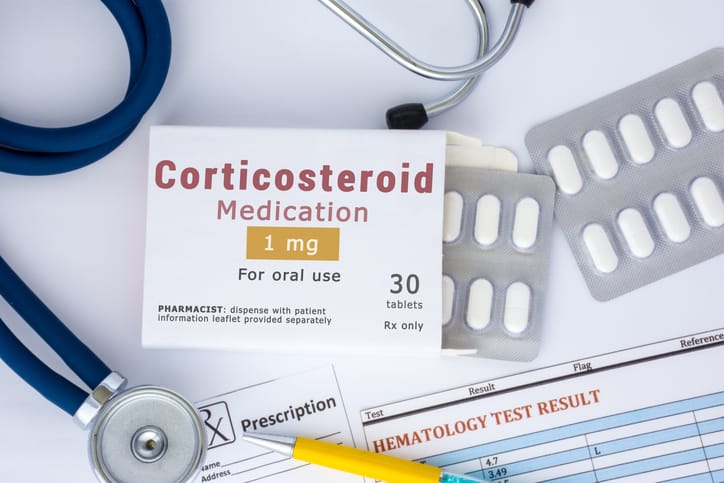In pregnancies that are deemed to be at-risk for fetal and neonatal alloimmune thrombocytopenia (FNAIT), intravenous immunoglobulin (IVIg) therapy is usually the preferred treatment for preventing bleeding complications. In some cases, corticosteroids such as prednisone may be offered in combination with IVIg.
The benefits of receiving both prednisone and IVIg are still unclear, and in some patients, prednisone use may lead to gestational diabetes.
Prednisone as an FNAIT treatment
Prednisone is sometimes prescribed to support the effectiveness of IVIg while also treating headaches caused by the therapy. Additionally, it can be used in pregnant mothers who are likely to give birth before 35 weeks gestation to prevent breathing problems, brain bleeds and developmental delays that could arise in premature babies.
Read more about FNAIT treatment and care
Currently, there is limited evidence supporting the combination of IVIg and corticosteroids such as prednisone. In fact, guidelines state that the corticosteroid dexamethasone should be avoided because it can lead to oligohydramnios, a condition in which there isn’t enough amniotic fluid during pregnancy.
How does prednisone cause gestational diabetes?
Steroids can raise your blood sugar through a few different mechanisms, including:
- Increasing glucose release from the liver
- Making the body less sensitive to insulin
- Stopping muscle and fat cells from absorbing glucose
Prednisone can raise your blood sugar within just four hours of taking it, and the effects can last up to 12 hours. The longer you take prednisone and the higher your dose is, the more likely you are to develop gestational diabetes.
For many individuals, gestational diabetes has no symptoms. However, if you experience increased thirst, excessive urination, nausea or blurred vision, make sure to set up an appointment with your doctor. Usually, the condition can be managed with lifestyle changes, but you may also need to take insulin to help prevent blood sugar spikes.
Tips to avoid gestational diabetes
If you do need to take prednisone during pregnancy, there are some steps you can take to help lower your risk of developing gestational diabetes:
- Eat a balanced diet: Try to eat three meals per day with snacks in between. If you eat too much at one time, it could cause your blood sugar to spike. Focus on incorporating whole grains, lean proteins and non-starchy vegetables like broccoli and peppers into your diet.
- Stay physically active: If you’re able to, setting up an exercise routine can help regulate your blood sugar levels and prevent insulin resistance. Walking, swimming and yoga are some low-impact options that may work for you.
- Manage your stress levels: Studies have shown that anxiety can increase your risk of developing gestational diabetes. Meditation, exercise and making sure you get enough sleep can help lower your stress levels.
Fortunately, the symptoms of gestational diabetes should go away soon after your baby is born.
Sign up here to get the latest news, perspectives, and information about FNAIT sent directly to your inbox. Registration is free and only takes a minute.


